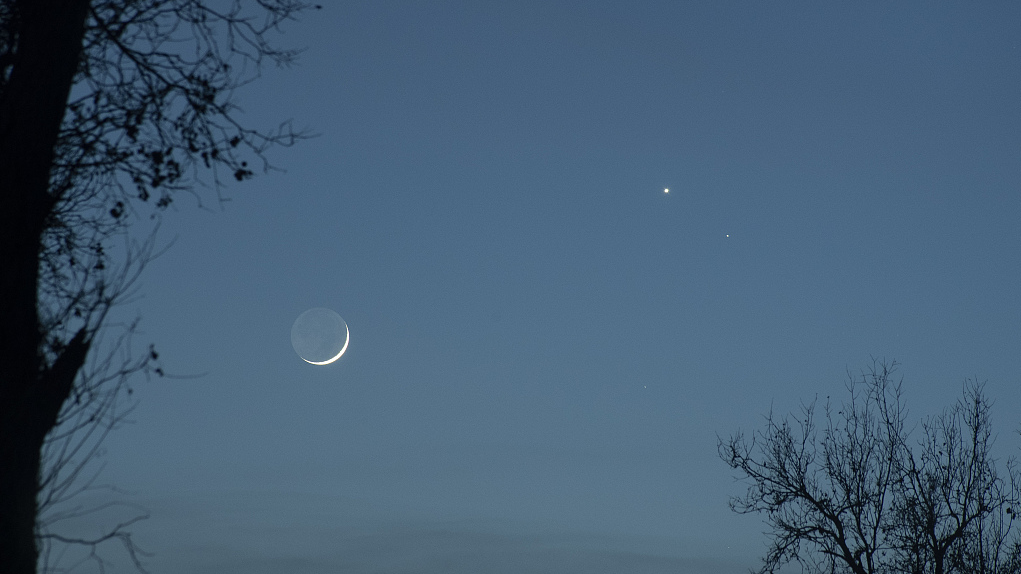
The moon, Saturn and Venus are all seen at once in Bayingolin Mongolian Autonomous Prefecture in northwest China's Xinjiang Uygur Autonomous Region, January 23, 2023. /CFP
The moon, Saturn and Venus are all seen at once in Bayingolin Mongolian Autonomous Prefecture in northwest China's Xinjiang Uygur Autonomous Region, January 23, 2023. /CFP
The two all-month-long brightest planets, Venus and Jupiter, will respectively near the moon on Wednesday and Thursday while getting closer to each other.
A conjunction is an astronomical phenomenon occurring when two celestial objects share the same right ascension or ecliptic longitude in the sky.
Once every 27.3 days, the moon passes through a narrow part of the sky centered on the ecliptic and encounters planets, according to starwalk.space.
Moon-planet conjunctions take place more frequently than planetary conjunctions.
How to spot
On February 22, Venus will reach conjunction with the moon in the constellation Pisces at 3:57 p.m. (Beijing time). The appulse – i.e. two planets have the smallest apparent distance as seen from Earth – will occur at 5:41 p.m.
On February 23, the waxing crescent moon located in the constellation Cetus will reach conjunction with Jupiter which is in the neighboring constellation Pisces at around 6 a.m. The appulse of the duo will occur about an hour later.
After sunset, observers can see events with the naked eye, a telescope, or binoculars before and after the exact time of conjunctions or appulses, as the planets will stay relatively close together for some time.
Those from parts of South America and Antarctica will have a chance to see a lunar occultation – the moon passing in front of a planet, Jupiter this time.
Nice and cloudless weather is always an ideal condition for sky observation. Stargazing apps are also helpful for locating celestial objects.
More to come
On February 28, the moon will make its closest approach to Mars. The two celestial objects will rise higher in the northern hemisphere.
Although Mars will not be as bright as Venus and Jupiter, its pale pink appearance is also worth an observation.
Venus and Jupiter will reach a conjunction on March 2.